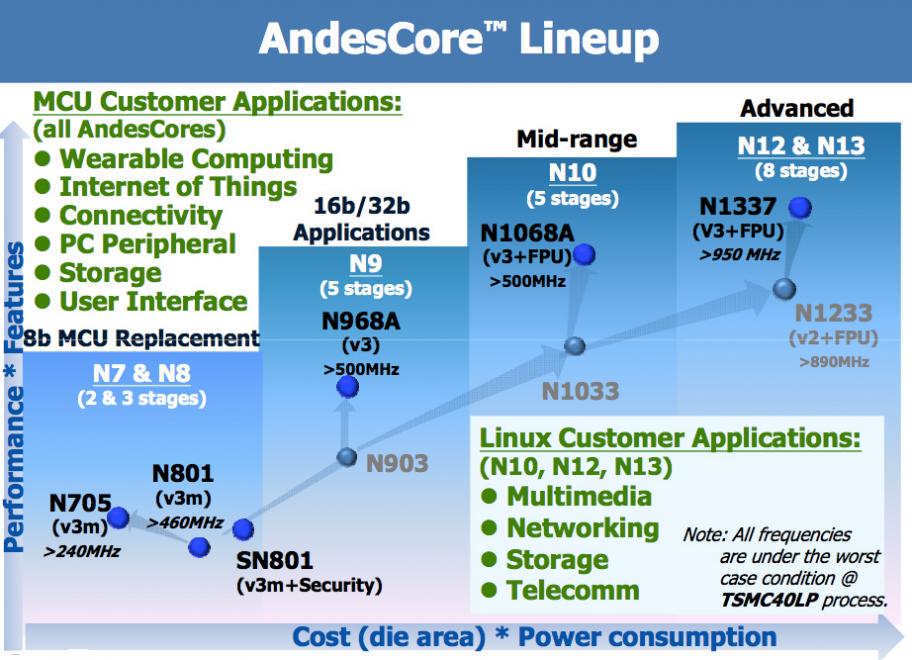I wrote in April about Andes Technology, a microprocessor IP licensing company that even the person sitting next to me, a strategic marketing guy from Qualcomm had never heard of. So, OK, if you read that earlier article you had at least heard of them.
Part of the reason you haven’t heard of them is that they are in Taiwan (in Hsinchu) and most of their initial business was with Taiwanese companies, especially Mediatek. But they have started to go global and now have 60 licensees including a couple each in Korea and Japan and some in China. They just recently closed their first US licensee. Their licensees have shipped over 300 million chips containing their cores.
They are not a one-trick pony either. There are cores from the low-end with two-stage pipeline that runs at 250MHz up to a high-end with 8-stage pipeline running at close to a gigahertz. Their focus is on low-power, and they claim better power numbers than ARM for equivalent performance.
The cores are not just RTL. They have another 60 partners in their ecosystem around the architecture. I won’t list them all, you’ll be glad to know, but they include many of the usual suspects of RTOSs, compilers, debuggers. And, of course, full Linux support.
The other reason that you haven’t heard of them is that their chips are in parts of a chip which are not visible. In a smartphone, all the apps are written to run on ARM so it is not really feasible to use a different processor. But all the other things like wireless or GPS have processors in them, and the code is not visible to the end-user so does not automatically have to be ARM. In fact, it is an even playing field in which the processor cores can compete on their merits. Also, the next big markets such as wearable computing and the internet of things (IoT) are even more focused on low power and, again, the actual architecture does not really matter (do you even know what the processor in Google Glass is?).
Another advantage that Andes has (along with some other competitors like Imagination’s MIPS) is that it is not ARM. “Can you imagine how hard it would be to negotiate with Xilinx if Altera did not exist?” one potential customer said, “That is like ARM.” At the MIPS event a couple of months ago, MIPS CEO said much the same thing: customers want a competitor that produces technically good cores, rather than making ARM another Intel. Although supporting multiple instruction set architectures (ISAs) is more expensive than just supporting one, it seems to be getting less so.
When I was at Ambit, customers would buy our synthesis software because it was good. But it was also free to them: they figured that they could get their design compiler license payments down by just as much if they had competition. Andes is finding some of the same effect too. By creating true competition to ARM, ARM cannot have a take-it-or-leave-it attitude.
So what sort of performance do they deliver? With a standard 40LP TSMC library (so not even in 28um) the N1337 delivers 908 MHz and 79 uW/MHz in 0.25mm2, which is 50% higher performance at 1/3 lower power and slightly smaller area than their competition. With a speed optimized library it exceeds the gigahertz barrier (still in 40LP).
More information on the Andes website here.
Share this post via:






Comments
0 Replies to “Andes: the Biggest Microprocessor IP Company You’ve Never Hear Of”
You must register or log in to view/post comments.